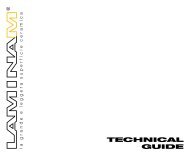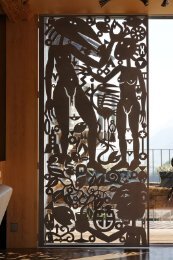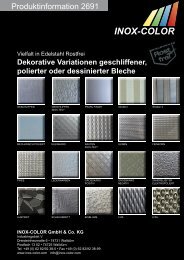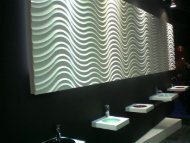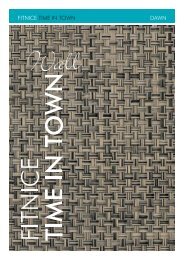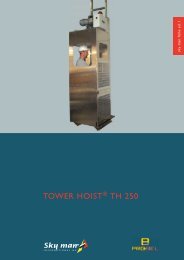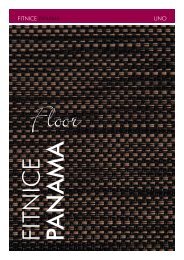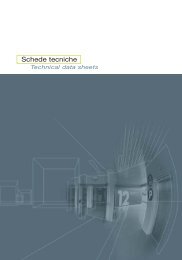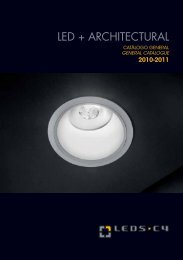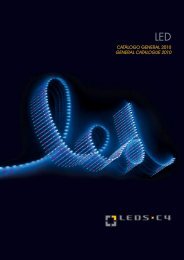Oltre il metallo -1- 20101112 p.1 - 42.cdr - DieMMe
Oltre il metallo -1- 20101112 p.1 - 42.cdr - DieMMe
Oltre il metallo -1- 20101112 p.1 - 42.cdr - DieMMe
You also want an ePaper? Increase the reach of your titles
YUMPU automatically turns print PDFs into web optimized ePapers that Google loves.
Il problema del rumore - The noise problem<br />
Attenuazione del rumore - Noise attenuation<br />
Noise attenuation in the workplace<br />
The reduction of noise in the<br />
workplace has become an<br />
essential requirement of modern<br />
life, and has given rise to an<br />
important series of theoretical<br />
studies and experimental<br />
research in the field of applied<br />
acoustics. We should add that<br />
technical progress certainly does<br />
not help when it comes to noise<br />
levels: on the contrary, in some<br />
industrial processes, the increase<br />
in noise is due to the very use of<br />
new machinery. In an industrial<br />
w o r k p l a c e , w e n e e d t o<br />
distinguish between noise<br />
deriving from machinery and the<br />
room’s inherent noise.<br />
a) the noise produced by<br />
machinery depends mainly on<br />
the vibrations of said machinery,<br />
which can be carried in the loadbearing<br />
structures of the<br />
bu<strong>il</strong>ding and transformed into<br />
acoustic vibrations. To reduce the<br />
intensity of these vibrations, it is<br />
essential we study the system<br />
used to install the machine on<br />
the bu<strong>il</strong>ding’s floor slab: the base<br />
of the machinery must be well<br />
insulated from the bu<strong>il</strong>ding’s<br />
load-bearing structure, and<br />
c o n n e c t i o n b e t w e e n t h e<br />
machine and floor must be made<br />
using efficient antivibration<br />
mounts. In this way, the machine<br />
tool, excited by the vibrations of<br />
the individual mechanisms,<br />
reacts in relation to its mass and<br />
inertia, with low-frequency (nonacoustic)<br />
vibrations, which<br />
depend on its fixing systems. All<br />
these problems must be<br />
examined at the design stage<br />
both of the machinery and the<br />
bu<strong>il</strong>ding since any measures<br />
taken once the bu<strong>il</strong>ding is<br />
finished are inevitably more<br />
expensive and less satisfactory. In<br />
t h e c a s e o f i n d u s t r i a l<br />
environments housing a number<br />
of machines, each with a<br />
different sound level, it is clearly<br />
just the higher sound levels that<br />
must be dealt with.<br />
b) the room’s noise depends on<br />
reverberation and on the various<br />
s o u n d w a v e s r e f l e c t i o n<br />
p h e n o m e n a . T o a v o i d<br />
reverberation problems, the<br />
room’s walls, floor and ce<strong>il</strong>ing<br />
must be covered with materials<br />
featuring a high absorption<br />
coefficient. Moreover, the<br />
volume of the room must be<br />
large enough to decrease sound<br />
energy density. Interior surfaces<br />
must be large to accommodate<br />
extensive surfaces of absorbent<br />
materials. Where possible, large<br />
windows and openings should<br />
be incorporated into the design,<br />
preferably left open to allow<br />
sound energy to escape outside.<br />
The above-mentioned rules and<br />
instructions for acoustic<br />
conditioning should be borne in<br />
mind when embarking on the<br />
design of a new site for industrial<br />
machining or processing.<br />
However, the bu<strong>il</strong>ding is often<br />
already completed, at which<br />
point the only option is acoustic<br />
correction to limit sound<br />
intensity and the concentration<br />
of reflected waves in some areas<br />
of the space.<br />
5.12



